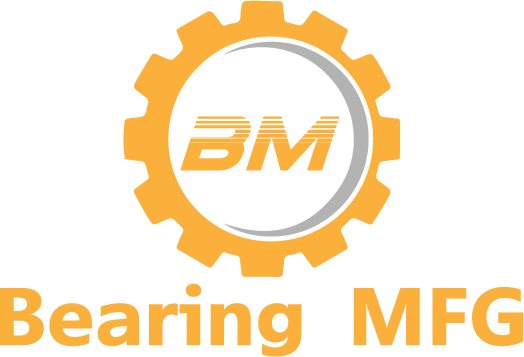Last Updated on March 23, 2024 by Allen
The main difference between roller bearing and ball bearing, Roller bearings are ideal for heavy radial loads due to their larger contact area, while ball bearings excel in high-speed applications thanks to their lower friction. This distinction guides their application: roller for load, ball for speed.

What are Roller Bearings
Roller bearings provide efficient support for rotating machinery components by distributing the load over a larger surface area, reducing friction, and enhancing durability. These cylindrical bearings consist of cylindrical rollers that are placed between the moving parts to facilitate smooth rotation.
The rollers are in constant contact with the raceways, allowing for high radial load capacity. Roller bearings come in various types, such as cylindrical, tapered, spherical, and needle rollers, each designed for specific applications based on load and speed requirements.
They’re commonly used in heavy machinery like conveyor systems, gearboxes, and vehicle transmissions. Understanding the different types of roller bearings and their applications can help you choose the most suitable option for your machinery, ensuring optimal performance and longevity.
What are Ball Bearings
Ball bearings, commonly known for their smooth and efficient operation, play a crucial role in supporting rotating machinery components. These small, spherical balls are positioned between two rings to reduce friction and enable smooth motion.
Ball bearings are designed to distribute the load evenly across the balls, allowing for high-speed rotation with minimal resistance. They’re widely used in various applications, from automotive engines and bicycles to industrial machinery and household appliances.
The design of ball bearings allows for efficient operation, making them ideal for situations where low friction and precise movement are essential. Understanding the function and benefits of ball bearings can help you choose the right type for your specific needs, ensuring optimal performance and durability.
Differences in Design,Friction,Application and Function
When comparing roller bearings and ball bearings, the differences in design, friction, application, and function become apparent.
Roller bearings have cylindrical rollers instead of balls, allowing them to support heavier loads and handle radial and thrust loads simultaneously.
On the other hand, ball bearings have spherical balls that enable them to operate with lower friction but are better suited for lighter loads and high-speed applications.
The design variance affects the overall performance and durability of the bearings. Roller bearings excel in applications requiring high load capacities and stability, while ball bearings are ideal for applications with lower loads and higher speeds.
Understanding these distinctions is crucial for selecting the right bearing type for your specific needs.
Pros and Advantages of Roller Bearings
With their ability to handle heavier loads and support both radial and thrust loads simultaneously, roller bearings offer distinct advantages in various industrial applications. These bearings excel in situations where high radial loads are present, providing enhanced stability and durability.
Roller bearings have a larger contact area compared to ball bearings, distributing the load more evenly, which leads to increased efficiency and reduced wear over time. The design of roller bearings also allows for smoother operation at high speeds, making them ideal for applications requiring precision and consistent performance.
Additionally, roller bearings are more resistant to shock and impact loads, ensuring reliable operation in demanding environments. Overall, the unique features of roller bearings make them a preferred choice for many industrial applications.
Cons and Limitations of Ball Bearings
Despite their widespread use in various applications, ball bearings come with certain drawbacks and limitations that are important to consider.
One significant limitation of ball bearings is their lower weight capacity compared to roller bearings, making them less suitable for heavy-duty applications.
Ball bearings are also more sensitive to misalignment, which can lead to increased wear and premature failure.
Additionally, ball bearings generally have higher friction levels than roller bearings, which can result in lower efficiency and higher energy consumption.
Another drawback is that ball bearings are more prone to skidding at high speeds, potentially causing issues with stability and performance.
Understanding these limitations can help you make an informed decision when choosing between ball bearings and roller bearings for your specific application.
Choosing the Right Bearing for You
Considering the limitations of ball bearings discussed earlier, selecting the right bearing for your specific needs is crucial in ensuring optimal performance and longevity. When choosing between roller and ball bearings, here are some factors to consider:
- Load Capacity: Determine the maximum load your application requires.
- Speed: Consider the operating speed of your machinery.
- Precision: Evaluate the level of precision needed for your equipment.
- Maintenance Requirements: Assess the ease of maintenance for each type of bearing.
- Cost: Compare the initial cost and long-term expenses of both roller and ball bearings.
